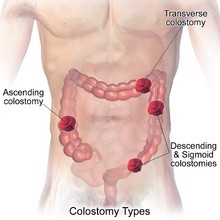A nurse is preparing a client's body for a postmortem family viewing.
Which of the following actions should the nurse take?
Ask the family if they want to participate in postmortem care.
Lie the head of the client's bed flat.
Place medical equipment to the side of the client's bed.
Remove the client's dentures to close their mouth.
The Correct Answer is A
Choice A- Ask the family if they want to participate in postmortem care Asking the family if they want to participate in post-mortem care is an important step to involve them in the process and respect their wishes. Some families may prefer to have healthcare professionals handle the post-mortem care, while others may want to participate in certain aspects. It is crucial to communicate and collaborate with the family to ensure their preferences are respected. Choice B- Lie the head of the client's bed flat. This response is not appropriate. Elevate the head of the bed as soon as possible after death to prevent discoloration of the face. Choice C- Place medical equipment to the side of the client's bed. Is not directly related to the preparation for a post-mortem family viewing. However, it is important to ensure a respectful and organized environment during the viewing, so any unnecessary medical equipment or supplies should be removed from the immediate vicinity of the client's bed. Choice D-Remove the client's dentures to close their mouth. Leave dentures in the mouth to maintain facial shape.The mouth can be gently closed without removing dentures, unless there are specific cultural or family preferences regarding the dentures.
Nursing Test Bank
Naxlex Comprehensive Predictor Exams
Related Questions
Correct Answer is ["A","B","C"]
Explanation
Create an opening on the skin barrier that is 1.27 cm (0.5 in) larger than the client's stoma: It is important to ensure that the opening in the skin barrier is slightly larger than the stoma to prevent irritation or pressure on the stoma. This allows for proper fit and helps maintain a secure seal.
Use a mild, non-irritating soap or specifically designed ostomy cleanser to clean the skin around the client's stoma: Harsh soaps or cleansers can irritate the skin around the stoma. Using a moisturizing or gentle cleanser helps maintain the integrity of the skin and reduces the risk of irritation or breakdown.
Empty the client's ostomy pouch before removing the skin barrier: It is important to empty the ostomy pouch to prevent leakage or spillage during the appliance change. This helps maintain cleanliness and prevents potential contamination or soiling of the surrounding area.
The timing of the ostomy appliance change is not specified in the given options. The appropriate timing for changing the ostomy appliance depends on the individual client's needs and preferences. It may be helpful to consider factors such as the client's comfort, schedule, and amount of output in determining the best time for the appliance change. This instruction is not necessary for the teaching session.

Correct Answer is ["A","C","D"]
Explanation
A.The client's complaint of upper chest discomfort and coughing up thick clear sputum suggests a potential respiratory issue. Checking oxygen saturation is crucial to assess for possible respiratory distress or hypoxia.
B.Tremors are a chronic symptom associated with Parkinson's disease in this client. While monitoring tremors is important for assessing Parkinson's disease management, they are not an acute issue requiring immediate follow-up in this scenario.
C.Coughing up thick clear sputum and upper chest discomfort indicate potential respiratory distress or infection. Monitoring the respiratory rate helps assess the severity of respiratory distress or compromise.
D.Heart rate is a vital sign that can indicate cardiovascular status and response to the client's reported symptoms of feeling bad. Elevated heart rate may indicate stress, pain, or cardiac involvement.
E.The client is reported as alert and oriented to self. While changes in level of consciousness are always important to monitor, the client's current alert and oriented state suggests no immediate acute change.
F.Chronic health conditions such as Parkinson's disease and anxiety are part of the client's history but are not acute findings that require immediate follow-up compared to the acute symptoms of upper chest discomfort and respiratory distress reported.
Whether you are a student looking to ace your exams or a practicing nurse seeking to enhance your expertise , our nursing education contents will empower you with the confidence and competence to make a difference in the lives of patients and become a respected leader in the healthcare field.
Visit Naxlex, invest in your future and unlock endless possibilities with our unparalleled nursing education contents today
Report Wrong Answer on the Current Question
Do you disagree with the answer? If yes, what is your expected answer? Explain.
Kindly be descriptive with the issue you are facing.
